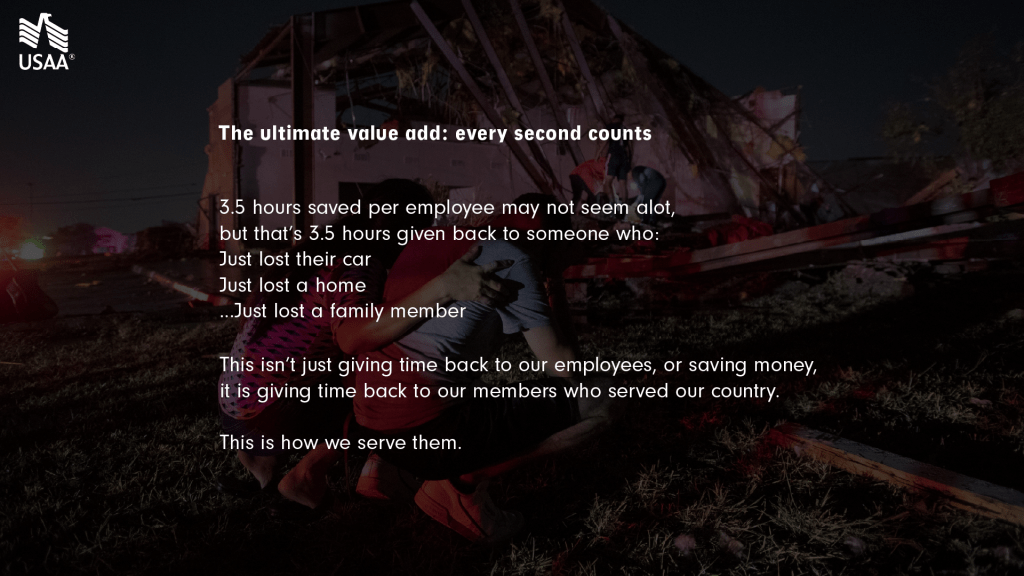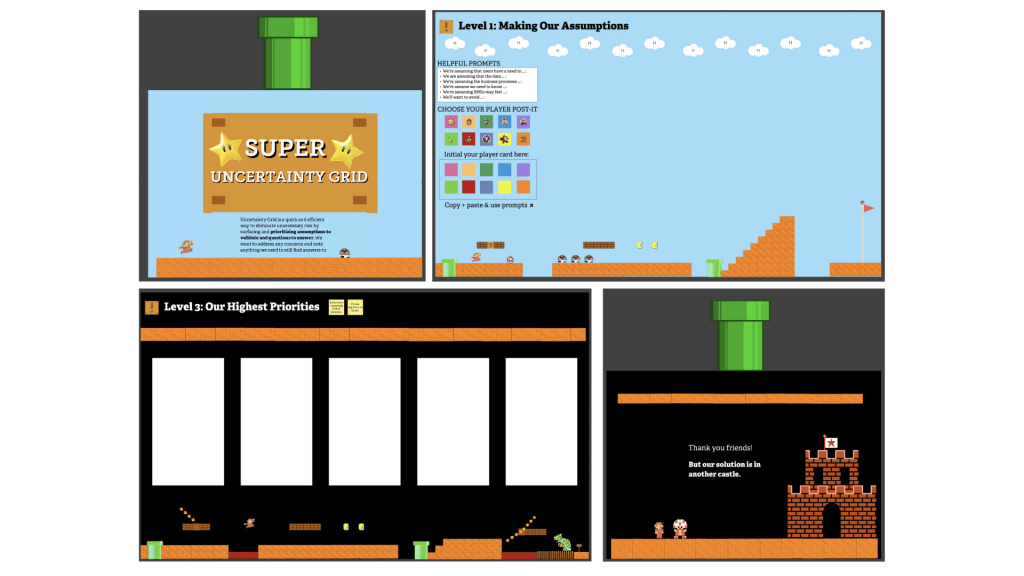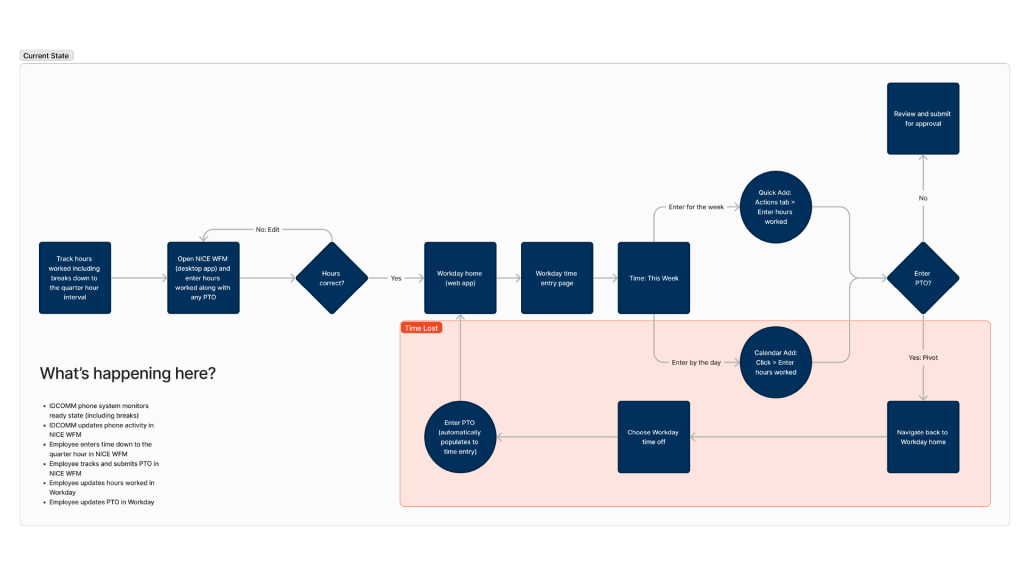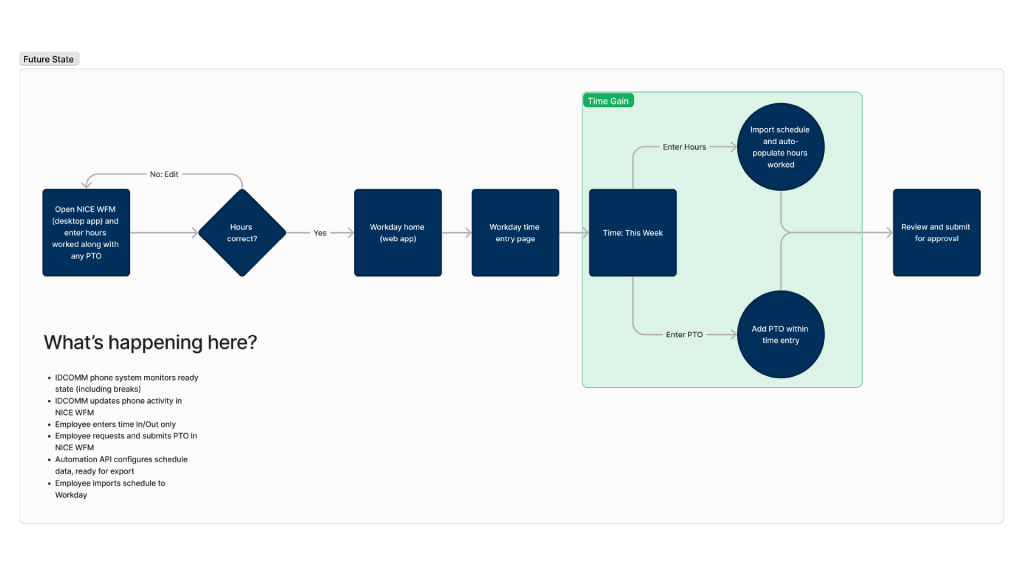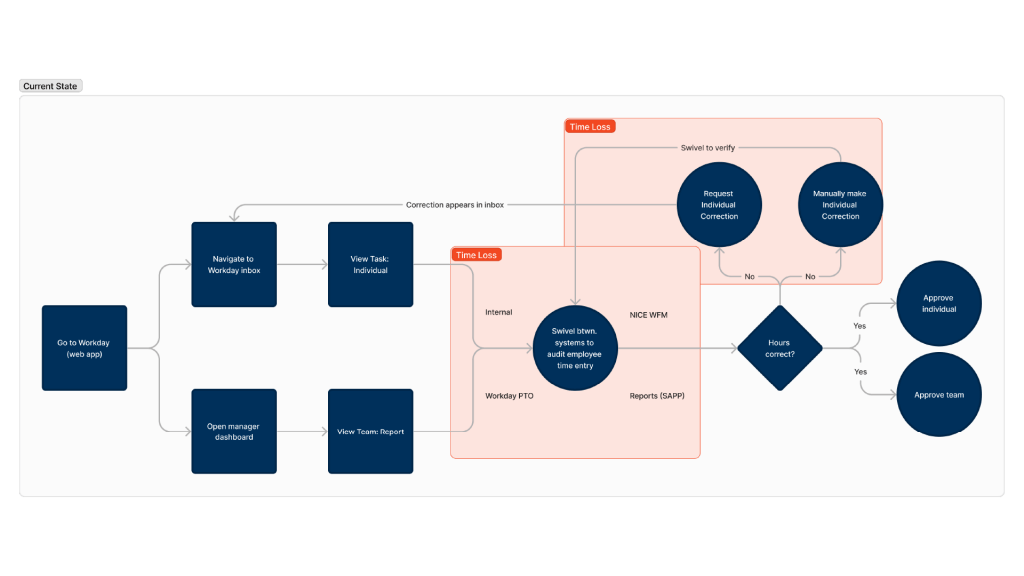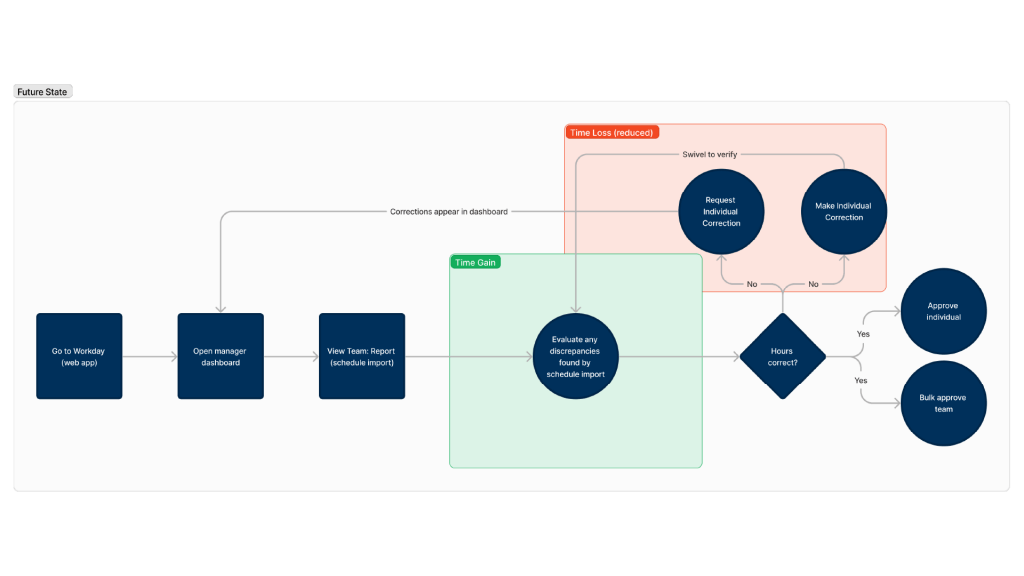Executive Summary
I served as the senior designer and lead design on this project, which was part of a larger effort to improve workforce experience.
Problem
Member service representatives (MSRs) work hourly taking calls from USAA members and currently enter and track their time across multiple systems. Their managers must manually review time entry per employee. This leads to hours wasted and costly mistakes. It takes time away from our members, often when they need us most.
Solution
Automating and streamlining time entry across systems is estimated to save a range of $1.7 to $2.8 million in annual salary and give back 70,082 hours across the manager and MSR population. This is thousands of hours returned to our employees to serve our members in need.
This is expected to be in production FY2024.
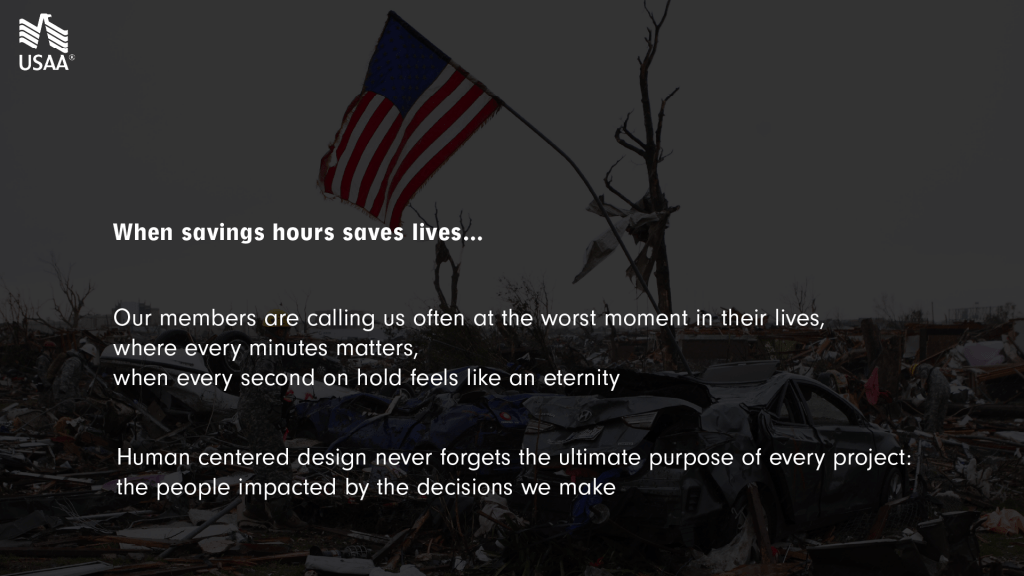
Planning & User Research Stage
– Stakeholder interviews to understand space
– Time entry user demo (remote observation)
– Workshop roadmap with team and stakeholders
– Create process maps with the aid of configuration experts and developers
Research
– Usability test current state
– User interviews
– Diary study + workshop (one month user diary, weekly additions)
– Data collection and reports (time estimates etc.)
– Generate visual artifacts to represent research (user flows, journeys, maps)
Ideation and Solution Design
– Ideation sessions with stakeholders, configuration experts and design
– Generate clear future state process maps and service design blueprints
Understand: Workshops for Service Design Problems
Workshops should never be dull! Service design projects require early alignment to rule out unintended consequences in production. I created a custom workshop to align on various partner and stakeholder concerns at the outset of the research stage. Since enterprise design doesn’t always give us designers creative freedom, I created a custom Super Mario level-based workshop using custom vector graphics built block by block in Mural. Yep… I even had a Mario-themed Spotify playlist!
Uncertainly exercises are a great way to allow partners and stakeholders the opportunity to present their concerns. This was especially important when dealing with Human Resources and time entry, as there are many legal requirements that must be met across a large workforce in multiple states and countries.
In addition to workshops held with stakeholders I also performed several early stage research projects such as auto-ethnographic research, time entry and approval demos with employees and managers and interviews with stakeholders and developers.
User Research
It was important to generate a current state understanding of how employees and managers used Workday to enter and approve time. Part of this usability test for managers and employees was to get a rough estimate for how long the time on task took across systems. Since Workday does not generate time on task reports and several systems were involved, we had to remotely test a representative number of users to get a baseline estimate used to calculate expected savings in terms of both hours and salary.
Diary studies were then conducted to provide a qualitative context for how users experienced time entry and approval. Select respondents were chosen to also participate in interviews to answer any unanswered questions.
Employee paint points
– Navigating across systems is time consuming and redundant
– Users self report, which leads to errors
– Time entry and time off are viewed the same, but are separate workflows in the Workday app
Employees say…
“It would be better if NICE just updated in OneSouce (Workday) instead of having to enter in two places”
“I would like the systems to communicate”
“I am not sure why I have to enter PTO in two places.”
Manager pain points
– Managers take a tremendous amount of time to review employee hours worked
– To avoid scrutinizing hours worked, many managers perform shortcuts which generates mistakes like overpayment
– Managers feel under pressure to generate timely reports
Managers say…
“Reviewing reports (time entry) could take half a day if I go line by line.”
“I always look for efficiencies… it’s a calculated risk because I mostly know what is going on in my department.”
The Solution + Value Proposition
By capturing the current time on task and based on diary studies, reports and data analysis…
The estimated time savings of proposed automation for our roughly 15,000 member service employees is 3.5 hours per year, which equals 52,240 hours of time saved and an average of $1m in employee wages.*
The estimated time savings of proposed automation for our 1292 managers is 13 hours per year, which equals 16,842 hours of time saved and an average of $1.2m in manager salary.*
Providing these calculations was essential in order to obtain the necessary developer resources required to commit to building the automation API. Additional maps were then generated based on technological understanding and limitations. These maps are not shared here since they are covered by NDA.
The solution ultimately called for automating time entry reports instead of manual verification. Turn on or subscribe to various Workday features to eliminate redundancy and improve user experience. Change to an In/Out time system for reporting to increase accuracy, reduce workload and improve time and pay compliance across a diverse number of states and countries that our employees reside in.
